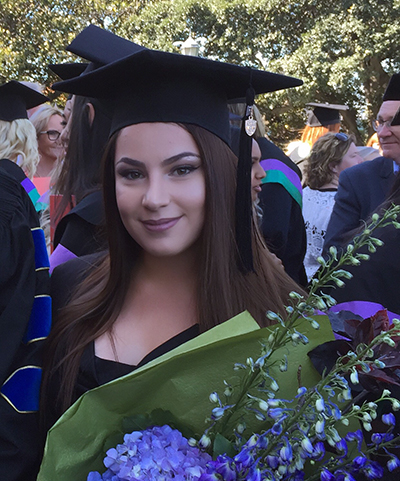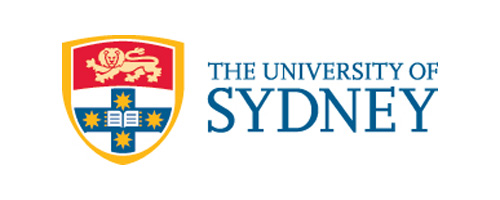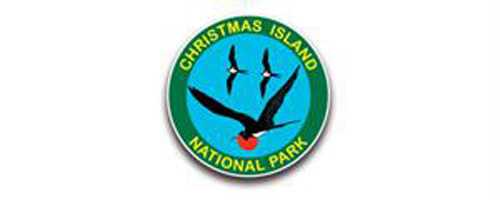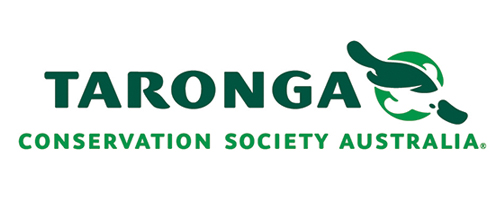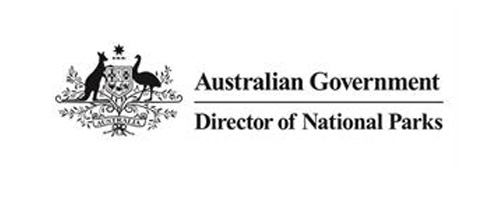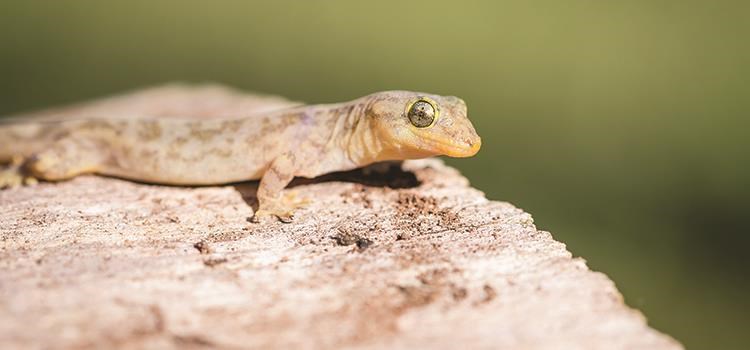
Project: 2.3.5
Combatting an emerging disease threatening endangered Christmas Island reptiles
Project Leaders: David N. Phalen , Karrie Rose
Research in Brief
The blue-tailed skink and Lister’s gecko are unique to Christmas Island. They are critically endangered, currently extinct in the wild, and persist only within a captive breeding program.
Recently, a new bacterial disease which causes facial deformity and death has been identified in the two species. It poses a major threat to the survival of these already threatened populations. This research will build on preliminary findings to develop a critical understanding of the disease, how it interacts with the reptiles and their environments, and if and how it can be managed.
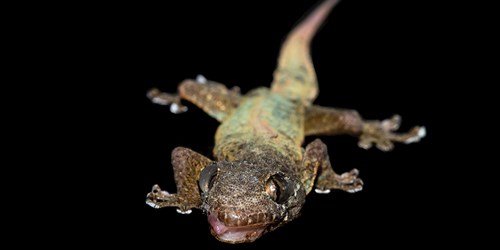 Infected gecko. Photo: Justin Welbergen
Infected gecko. Photo: Justin Welbergen
Why is the research needed?
Although once abundant and widespread on Christmas Island, the Lister’s gecko (Lepidodactylus listeri) and blue tailed skink (Cryptoblepharus egeriae) are now extinct in the wild, and only persist within captive breeding programs on Christmas Island and at Taronga Zoo in Sydney. Invasive species, especially the Common Asian wolf snake, are considered the main cause of extinction in the wild.
In 2014, a new disease was identified in reptiles in the captive breeding program on CI. Animals affected by the disease initially develop swelling around the head and eyes followed by destruction of bones and internal organs. Reptiles succumb to death as early as a few weeks to six months from the initial display of disease. In all cases, with the exception of a single blue-tailed skink, infection results in death.
Small numbers of geckos within the Christmas Island captive breeding colony have become infected; however, the swift implementation of quarantine and biosecurity protocols minimised disease spread, and the captive colony is currently disease-free. The disease has been documented in free-ranging invasive Asian house geckos across Christmas Island.
The cause of the disease has been identified as a newly described species of Enterococcus bacterium. Without research and management, this poorly understood disease may prove to be catastrophic for the small and vulnerable remaining populations of endangered reptiles. Little is known about the mechanisms of disease or, the likelihood this bacteria may spread to other species. To our knowledge, the disease has not spread beyond Christmas Island; however the susceptibility of local reptiles suggests the bacteria may pose a conservation threat to a variety of species if it ever spread to mainland Australia or elsewhere.
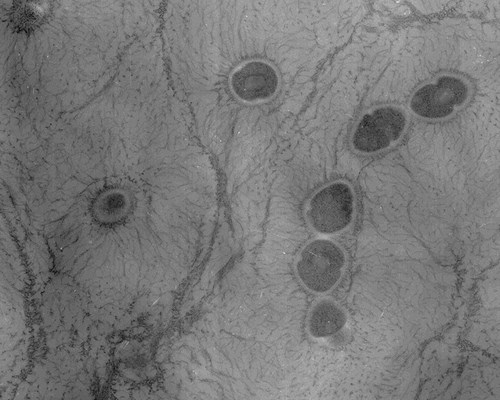 Electron microscopy image of bacterium. Photo: Mukesh Srivastava
Electron microscopy image of bacterium. Photo: Mukesh Srivastava
How will the research help?
The research will fill knowledge gaps and identify management strategies for the newly identified Enterococcus sp. which is fatally affecting native Christmas Island reptiles. This is essential to ensuring the health of captive blue-tailed skink and Lister’s gecko populations, and successful reintroduction into the wild.
- The project will investigate the disease from a number of aspects to identify:
- How the disease is transmitted
- How the bacterium is able to avoid the immune system and cause such extensive disease
- The source of the bacterium and how it persists in the environment
- Treatment options for infected reptiles
- Prevention protocols for healthy reptiles
The research will develop evidence based guidelines for Christmas Island National Park staff to treat infected animals, prevent infection in captive animals, and limit/mitigate the spread of infection within wild and captive reptile populations and the environment on Christmas Island. This will be essential to the long-term conservation of both species and for any future translocation programs.
The project will also help identify the potential risk of spread beyond Christmas Island and arm quarantine agencies with strategies to reduce the risk of spread and to identify, quarantine and treat any outbreaks.
 Jessica Agius in the lab. Photo: Charley Pollard
Jessica Agius in the lab. Photo: Charley Pollard
What research activities are being undertaken?
The research will build upon preliminary findings established by studies undertaken in late 2015, and will include:
- Screening genetic sequence data of the bacterium to identify genes that code for resistance to antibacterial drugs; traits that allow the bacterium to maintain virulence; and the metabolic requirements necessary for growth and replication of the bacterium.
- Microscopically examining diseased tissues from infected reptiles to determine how they replace healthy tissue, their bacterial load and bacterial shedding.
- Sampling native and invasive reptiles, reptile prey/food and areas in the environment; then analysing samples to determine the potential source of this bacterium and reservoirs of infection.
- Use genetic sequence data and antibiotic sensitivity trials to determine which treatments are most effective.
Who is involved?
Researchers from the University of Sydney are working collaboratively with Parks Australia, Christmas Island National Park staff, the Australian Registry of Wildlife Health, Taronga Conservation Society Australia, the National Environmental Science Program, and the Australian Museum.
The Australian Pacific Science Foundation, Taronga Conservation Science Initiative, Holsworth, and Perpetual are also supporting this research project.
Where is the research happening?
The laboratory work associated with the project is being undertaken at The University of Sydney, with the field work component carried out on Christmas Island.
When is the research happening?
The project will run from early 2017 to 2021.
More Information
For more information please contact:
University of Sydney Ph.D. candidate, Jessica Agius — jessica.agius@sydney.edu.au
Top image: Listers Gecko. Photo: Kirsty Faulkner
-
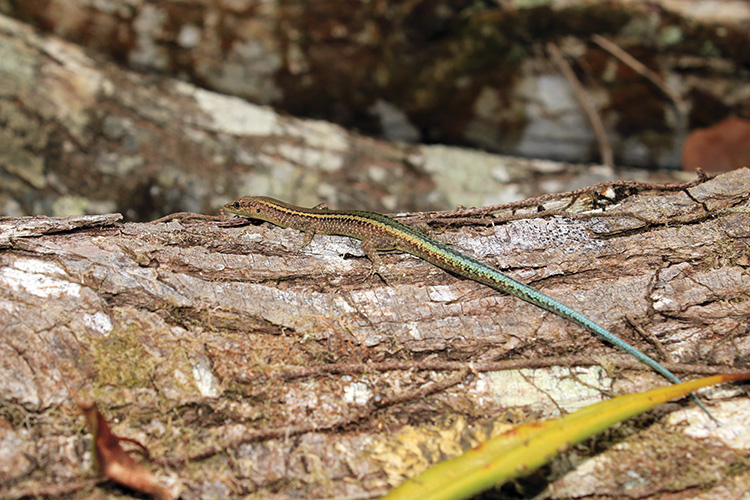
Beyond captivity for Christmas Island reptiles
Tuesday, 26 November 2019 -
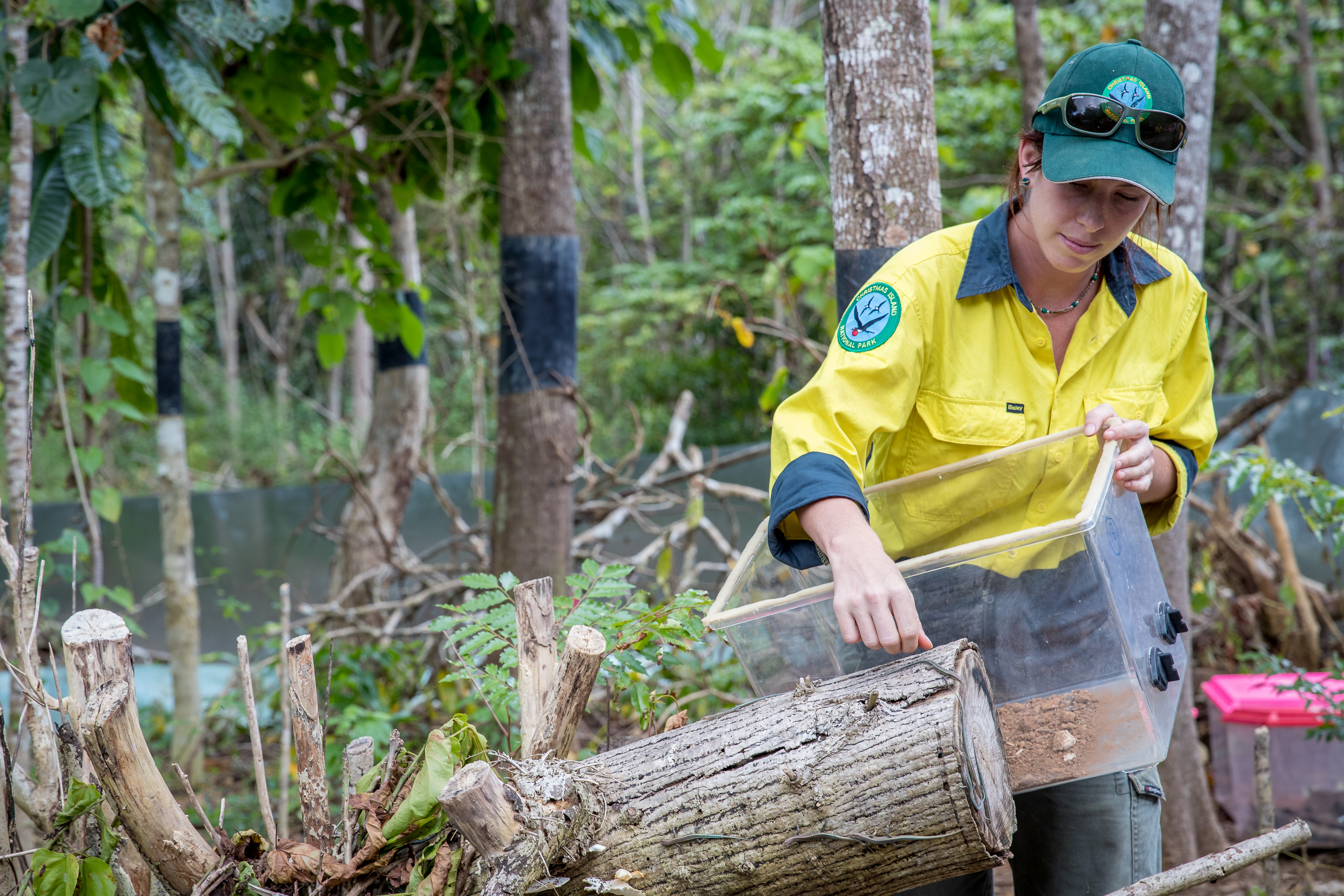
New territory for Christmas Island reptile conservation
Monday, 07 August 2017 -
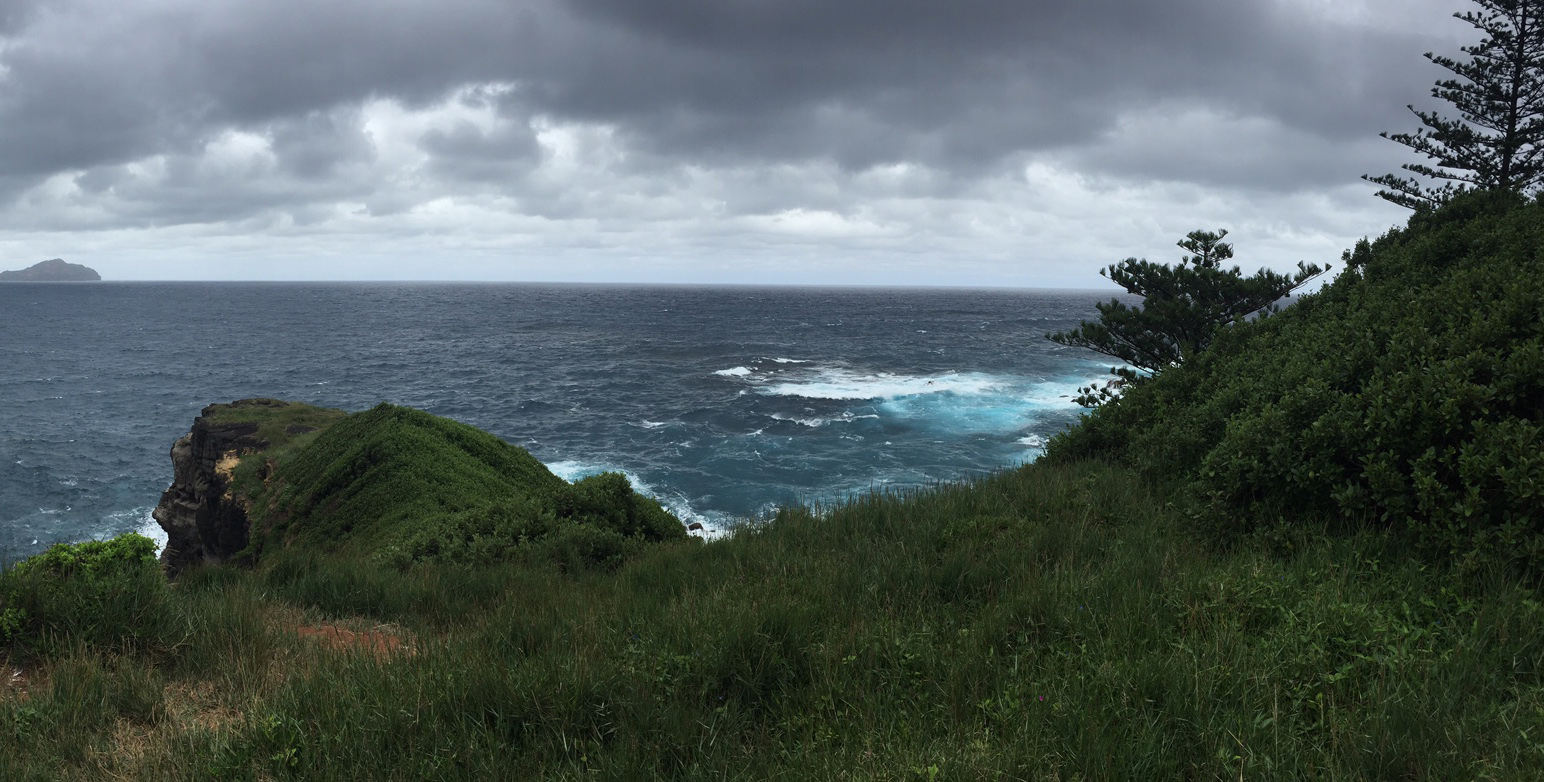
Success, failure and lessons learned on Australian islands
Wednesday, 04 May 2016 -
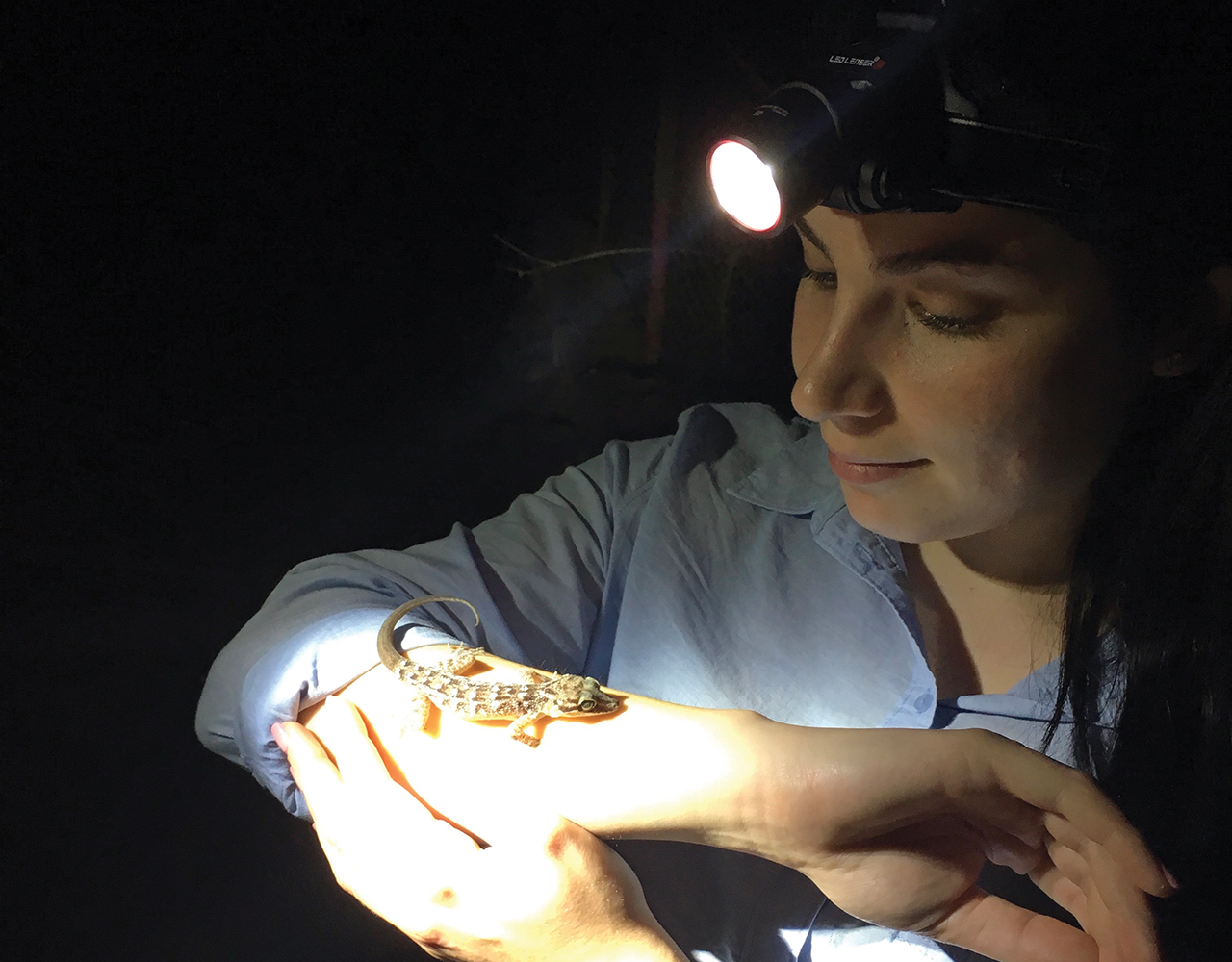
Protecting threatened Christmas Island reptiles from a new disease
Wednesday, 28 October 2020


